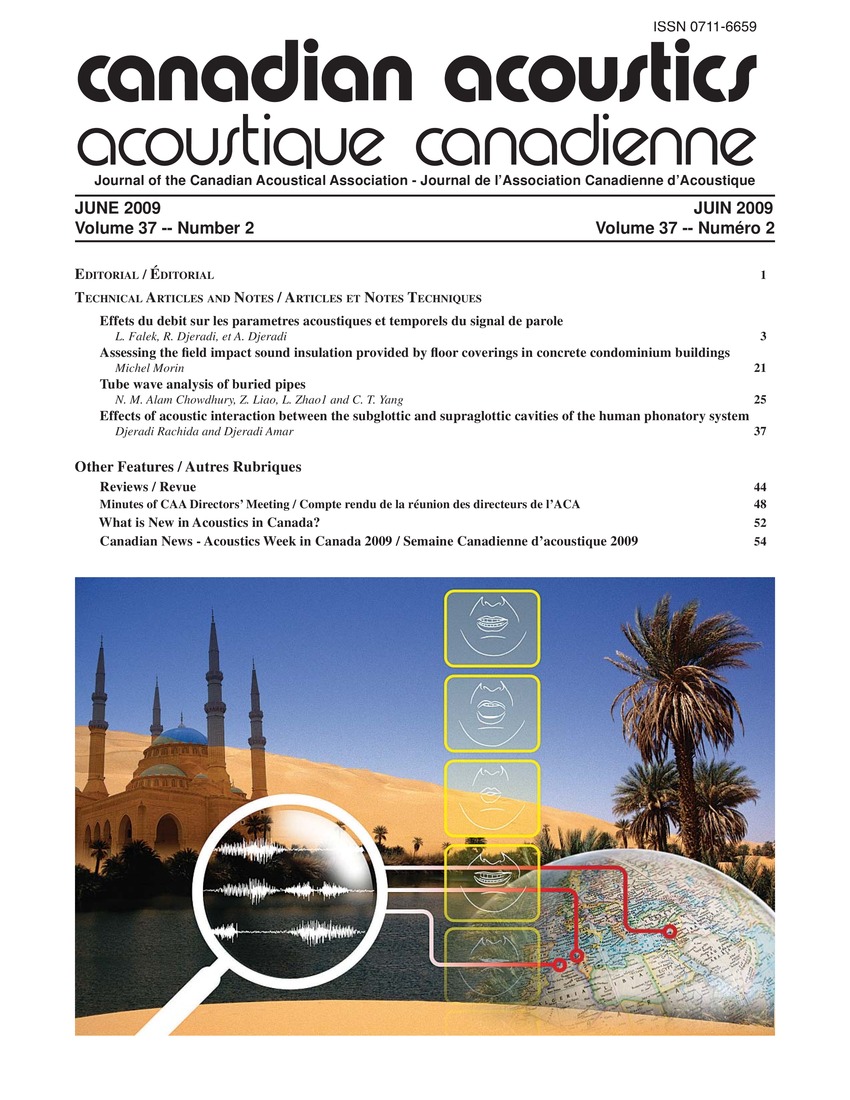Effects of acoustic interaction between the subglottic and supraglottic cavities of the human phonatory system
Keywords:
Resonance, Acoustic interaction, External excitation, Geometrical configurations, Phonatory system, Pseudorandom sequences, Resonance frequencies, Second phase, Spectral data, Vocal-tractsAbstract
The purpose of this work, is to describe the effects of the coupling of the subglottic and supra glottic cavities of the human phonatory apparatus. For this, we will determine and use the transfer function of the vocal tract evaluated owing to an exploration of the human phonatory system using an external excitation using a pseudorandom sequence; this method was developed by Djeradi et. al. 1991. This evaluation will be carried out on the basis of the following three conditions of the glottis: open glottis, closed glottis and variable glottis. One of the advantages of this method will be used, indeed, it is possible, at the time of the same expiry phase that corresponding to a sustained articulatory configuration, to record the signal of the sound itself and the useful signal for the measurement of the transfer function. The comparison of the various spectral data thus obtained highlights the subglottic effects of coupling on the one hand and shows that the conditions at the glottis have an influence on the resonances of the supraglottic cavities on the other hand. This enabled us highlight an increase in the value of the resonance frequencies, of the band-widths and a modification of the deviation between the resonances of the vocal tract. We have also noted the appearance of additional resonances peaks that can correspond to subglottic cavities During the second phase, we reproduced these effects by simulations on geometrical configurations obtained by the X- rays method performed on the same person and for the same configurations.Additional Files
Published
How to Cite
Issue
Section
License
Author Licensing Addendum
This Licensing Addendum ("Addendum") is entered into between the undersigned Author(s) and Canadian Acoustics journal published by the Canadian Acoustical Association (hereinafter referred to as the "Publisher"). The Author(s) and the Publisher agree as follows:
-
Retained Rights: The Author(s) retain(s) the following rights:
- The right to reproduce, distribute, and publicly display the Work on the Author's personal website or the website of the Author's institution.
- The right to use the Work in the Author's teaching activities and presentations.
- The right to include the Work in a compilation for the Author's personal use, not for sale.
-
Grant of License: The Author(s) grant(s) to the Publisher a worldwide exclusive license to publish, reproduce, distribute, and display the Work in Canadian Acoustics and any other formats and media deemed appropriate by the Publisher.
-
Attribution: The Publisher agrees to include proper attribution to the Author(s) in all publications and reproductions of the Work.
-
No Conflict: This Addendum is intended to be in harmony with, and not in conflict with, the terms and conditions of the original agreement entered into between the Author(s) and the Publisher.
-
Copyright Clause: Copyright on articles is held by the Author(s). The corresponding Author has the right to grant on behalf of all Authors and does grant on behalf of all Authors, a worldwide exclusive license to the Publisher and its licensees in perpetuity, in all forms, formats, and media (whether known now or created in the future), including but not limited to the rights to publish, reproduce, distribute, display, store, translate, create adaptations, reprints, include within collections, and create summaries, extracts, and/or abstracts of the Contribution.


